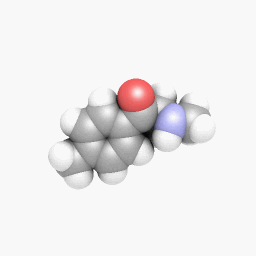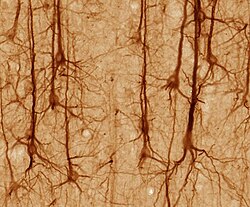User:The.Filsouf/Workspace

| This is a Wikipedia user page. This is not an encyclopedia article or the talk page for an encyclopedia article. If you find this page on any site other than Wikipedia, you are viewing a mirror site. Be aware that the page may be outdated and that the user in whose space this page is located may have no personal affiliation with any site other than Wikipedia. The original page is located at https://en.wikipedia.org/wiki/User:The.Filsouf/Workspace. |
Clinical[edit]
(Neuro-)Psychopharmocology[edit]

http://www.guardian.co.uk/commentisfree/2010/jan/15/david-nutt-drugs-science
Mephedrone[edit]
- Drug
- Legality
- Illegal in Israel, Norway, and Sweden [1]
- Street use
- Experiences
- Research
- On the net:

Neurology[edit]
Psychiatry[edit]
Clinical Psychology[edit]
Psychotherapy[edit]
Issues in practising Psychotherapy:
- Ethical considerations
- Various codes of practice
- Power in the therapeutic relationship
- Implications of sexuality, cross-cultural and gender issues in the therapeutic relationship
- Emotions and human relationships
- Getting stuck in a certain mode of behaving
- Time-limited and open-ended therapy
- Concepts of Mental Health and Illness and their implications in the health care system
- Loss and bereavement
- General counselling skills: verbal and non-verbal. Silence, empathy, active listening, questions, reflecting back, paraphrasing, summarising, clarifying, and challenging
Neuroscience[edit]
Some general interests
- Human brain - Watch: The Origin of the Human Mind: Brain Imaging and Evolution | List of regions in the human brain
- Brainarium
- 3D Human Anatomy
- UCL Neuroscience
- Neuroanatomy and Neurophysiology
- Neuroscience and Cognitive neuroscience
- Neuropsychiatry / Neuroscience and psychotherapy
- Neural correlates
- Neurophenomenology
Neurons[edit]
| neuron (Nerve Cell) | |
|---|---|
 SMI32-stained pyramidal neurons | |
| Anatomical terms of neuroanatomy |
A neuron (pronounced /ˈnjʊərɒn/ N(Y)OOR-on, also known as a neurone or nerve cell) is an excitable cell in the nervous system that processes and transmits information by electrochemical signaling.
- Nernst Potential in reverse potential: E (equilibrium potential, for potassium in volts)
- Celluar structure, - Major components:
- Dendrite
- Cell body - Mitochondrion, Endoplasmic reticulum, Nucleus, Golgi apparatus
- Axon
- Synapse - Synaptic vesicles, receptors, re-uptake pump
- Signalling and Neurotransmission
- Membrane potential and Nernst potential (reverse potential) and Threshold potential
- Action potential
- Neurotransmitters (Song/Video)
- Exitory - Glutamic acid | Channels: NMDA / NMDA receptors
- Inhibitory - GABA / GABA receptors (Anxiety)
- AMPA / AMPA receptors
- Monoamines: Dopamine (Pleasure) and Serotonin (Sadness/depression!)
- Noradrenaline (Stress)
- Post-synaptic potential
- Dendritic spike and STDP (Spike training dependent plasticity)
- Mathematical Model - Hebbian theory (i.e. Hebbian learning)
Neural development[edit]
- Gastrulation: Neural plate, Neural tube, optic cup
- Cylindrical coordinate system, Temporal lobe / Temporal lobe formation
the 'rule of Sereno'
Visual system[edit]

- Retinal circuitry
- Lateral geniculate nucleus (LGN), Ventral stream and Dorsal stream
- Visual map structure (conformal maps) dLGN (layers, non-lagged/lagged)
- Visual cortex
- Primary Visual Cortext / Striate cortex (V1)
- Extrastriate cortex (V2, V3, V4, and V5)
- Processing
- Channels:
- Magnocellular part (M) - Large CB - Movement
- Parvocellular part (P) - Small CB - Colour processing, fine pattern, slowly moving objects
- Cells: Ganglion cells - Simple cell, Complex cell and ON / OFF cells,
- Receptive fields:
- Retina-Geniculate-Striate System
- Simple Cortical Cells
- Complex Cortical Cells
- Brightness, Colours, Form, Depth, Edges
- Motion
- Primary motion - V5 (MT), Motion perception
- Visual pattern motion
- Objects
- Channels:
- Cortical visual processing streams (interblobs, blobs, layer 4B)
- Visual attention - Visual search
- Conformal maping in the visual system
Somatosensory system[edit]
- somatosensory receptors types
- arm diagram (length, force, alpha/gamma motoneurons)
- somatosensory pathways (dorsal column, spinothalamic, spinocerebellar)
- somatosensory cortical areas
- somatosensory cortical plasticity
Motor system[edit]
- gaze stabilization
- sensorimotor coordinate transformations
- striatum, cerebellum connections
- pattern generators and motor cortex
Limbic System[edit]
- Connectional overview limbic system
- Egocentric place, head direction, grid cells
MRI Physics[edit]
Also see:
User:GyroMagician/Malvern
Basics[edit]

- Provides high resolution anatomic structure (as with X-ray CT)
- Provides high contrast between different soft tissues (X-ray CT cannot)
- No exposure to radiation and hence safe
- More complicated instrumentation
- Takes longer to acquire a scan than CT, more susceptible to patient motion
- Free lessons: The Basics of MRI
- MRI hardware
- Static magnetic field
- Early MRI = permanent magnet
- Superconducting magnets
- RF System, Radiofrequency coils
- Gradient coils
- Static magnetic field
- Spin
- The hydrogen (1^H) atom inside body possess “spin”. Spin is a fundamental property of nature like electrical charge or mass. Spin comes in multiples of 1/2 and can be + or -. Protons, electrons, and neutrons possess spin. Individual unpaired electrons, protons, and neutrons each possesses a spin of 1⁄2 or - 1⁄2. Two or more particles with spins having opposite signs can pair up to eliminate the observable manifestations of spin. In nuclear magnetic resonance, it is unpaired nuclear spins that are of importance.
- In the absence of external magnetic field, the spin directions of all atoms are random and cancel each other.
- When placed in an external magnetic field, the spins align with the external field.
- By applying an rotating magnetic field in the direction orthogonal to the static field, the spins can be pulled away from the z-axis with an angle \alpha
- Precession
- Spins precess at a single frequency (w0), but incoherently − they are not in phase, so that the sum of x-y components is 0, with net magnetization vector in z direction
- The bulk magnetization vector rotates around z at the Larmor frequency (precess)
- The precession relaxes gradually, with the xy-component reduces in time, z-component increases
- The xy component of the magnetization vector produces a voltage signal, which is the NMR signal we measure
- Bloch equation
MRI Image Formation[edit]
- saturation recovery equation
- spin echo mechanism
- gradient echo mechanism
- gradient echo with small flip angle equation
- signal-to-noise considerations
- phase-sensitive detection
- Fourier transform
- spatial frequency space (k-space)
- slice selection
- frequency encoding
- phase encoding and imaging equation (forward)
- image reconstruction (inverse)
- aliasing and field-of-view
MRI Pulse Sequences; MEG/EEG Forward/Inverse[edit]
- fast gradient echo (FLASH)
- echo planar imaging (EPI)
- - - -
- derivation of current source density
- linear forward solution
- linear inverse
- dipole fitting
Cognitive Neuroscience[edit]
Some templates[edit]
Sensory processing[edit]
- Visual
- Auditory
Motor[edit]
- Motor neuron
- Systems and control
- Computation
Executive functions[edit]
i.e. planning, cognitive flexibility, abstract thinking, rule acquisition, initiating appropriate actions and inhibiting inappropriate actions, and selecting relevant sensory information...
- Decision making
- Reasoning and problem solving
Memory[edit]
Awareness[edit]
Consciousness[edit]
Representations[edit]
Emotions[edit]
- Limbic system: Electrical stimulation of the limbic system in conscious patients evokes emotion (Ervin & Martin, 1986)
- AMYGDALA, central to: emotional processing of threat stimuli and storage of emotional memories also serves a role in processing positive emotions
Philosophy[edit]
To-do list is empty: remove {{To do}} tag or click on edit to add an item. |
Old Notes: User:The.Filsouf/Old Notes

![{\displaystyle E_{eq,K^{+}}={\frac {RT}{zF}}\ln {\frac {[K^{+}]_{o}}{[K^{+}]_{i}}},}](https://wikimedia.org/api/rest_v1/media/math/render/svg/b7eb1afcc5d7a5032ff24be5c403b43b1307b01e)